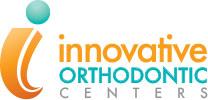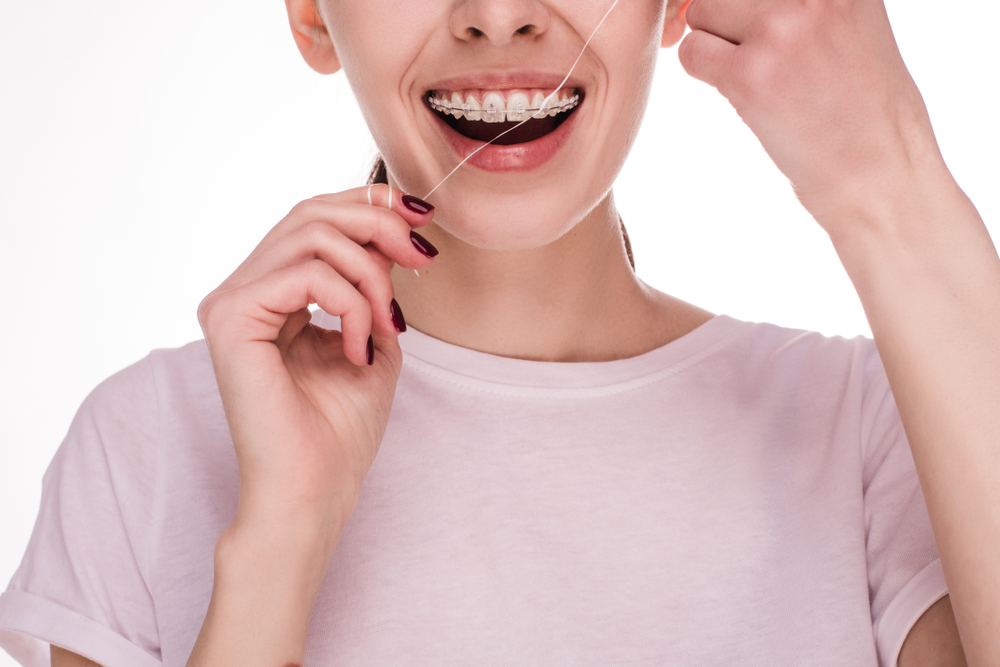
What You Should Know About Braces and Gingivitis
When you think about braces treatment, your teeth are probably among the first things that come to mind. Yet, your gums play a big role too. When your gums are healthy, they allow the teeth to move into place more efficiently. They also help hold your teeth in position when they reach their final destinations. This is why practicing amazing oral hygiene to avoid issues like gingivitis will go a long way in helping you get the best braces results.
In this post, the team at Innovative Orthodontic Centers will go over:
- What is gingivitis?
- Is gingivitis with braces common?
- How to get rid of gingivitis with braces
- Preventing gum disease while wearing braces
- Can I get braces with gum disease?
What is Gingivitis?
Gingivitis is inflammation of the gums (gingiva) and is a mild, early type of gum disease, technically called periodontal disease. It occurs when the sticky bacterial film, known as plaque, builds up on the teeth and the bacteria infect the gums, which can make them swollen and red. Gingivitis also causes the gums to bleed easily.
The good news is, with proper dental care and good oral hygiene, gingivitis is treatable and reversible. However, if it’s not treated, it can progress into periodontitis, the more severe form of gum disease. Though periodontitis can be managed, it can’t be cured, and this type of gum disease is a major cause of tooth loss in adults.
Is Gingivitis With Braces Common?
Gingivitis is very common with or without braces. In fact, a CDC report noted that 47.2% of adults in the United States have some form of periodontal disease. While risk factors like smoking, genetics, hormones and a poor diet can increase your chances of developing gingivitis, it’s the bacteria and toxins in plaque that actually irritate the gums.
When you have braces, the brackets give plaque more places to hide. Additionally, food particles can also get trapped in your hardware, providing the bacteria something to feed on. As the plaque flourishes around your gum line, gingivitis can occur.
What are the Signs of Gingivitis During Braces Treatment?
Gingivitis doesn’t always produce noticeable symptoms, which highlights the importance of keeping up with regular dental exams and cleanings during your braces treatment.
When symptoms are present, the signs of gingivitis include:
- Red and/or irritated gums
- Swollen gums
- Tenderness
- Bleeding gums, particularly when brushing and flossing
- Bad breath that doesn’t go away after brushing your teeth
- Sensitivity
Red, swollen gums with braces aren’t uncommon. The same goes for tenderness. This usually happens when you first start treatment or if a piece of food gets lodged between your braces and gums.
Redness, swelling and tenderness will go away once you get used to having an appliance in your mouth or when you get rid of the food debris. So, if you have swollen gums with braces for a week or two after getting your braces put on, it’s not usually something to worry about. When the symptoms are from gingivitis, they’ll be persistent.
How to Get Rid of Gingivitis With Braces
If you do have gingivitis with braces, there’s no need to panic. As we said earlier, gingivitis is easily treated and reversed. When it comes to how to get rid of gingivitis with braces, your first step is scheduling a visit with your general dentist. Your dentist will be able to confirm that you do actually have gum disease during an exam. Naperville Dental Specialists is also under the Innovative Dental Partners umbrella, so you can find general dentists and specialists under the same roof as our practice for maximum convenience.
Since gingivitis is gum disease in its very early stage, often, a professional dental cleaning will be enough to start the healing process. The hygienist will use special tools to scrape away tartar and plaque that you can’t remove with a regular toothbrush and floss. Your dentist will also help you develop a proper homecare routine to completely eliminate the gingivitis and keep it from returning.
Depending on your situation and needs, you may have to go in for professional cleanings more often than every six months. If gum disease has progressed, your dentist may also recommend other treatment options, including antibiotics and scaling and root planing.
Preventing Gum Disease While Wearing Braces
Don’t let the thought of plaque keep you from getting braces. At Innovative Orthodontic Centers, we use self-ligating braces, which feature a streamlined design and don’t have elastics or ties, making them much easier to keep clean and plaque-free. Patients who struggle with oral hygiene also have the option of choosing Invisalign®, Invisalign Teen, Invisalign First or Invisalign With Mandibular Advancement. Since the aligners are removable, you can brush and floss as you normally would.
While gingivitis is easily treated, prevention is always best. Here’s how to banish plaque and avoid gingivitis with braces:
- Brush your teeth with a soft-bristled toothbrush and fluoride toothpaste in the morning, after meals and snacks, and before bed. Hold your toothbrush at a 45-degree angle to clean the top and bottom of your brackets. Brush all surfaces of your teeth, along your gum line and give each tooth individual attention.
- Floss once daily. Flossing with braces can be a bit tricky. To make it easier, use a floss threader or an orthodontic flosser. Position the floss between two teeth and floss up and down the side of one tooth, getting under the gum line, and then up and down the side of the other tooth. Repeat until you’ve flossed your entire mouth, including your back molars.
- Research suggests that using an interdental brush is particularly effective for removing plaque around braces. These tiny brushes are excellent for getting in between larger spaces and in the nooks and crannies around your brackets. Use an interdental brush, also called an interproximal brush or proxy brush, to clean your braces at least once a day.
- Add a Waterpik to your oral hygiene routine. A water flosser stimulates the gums to reduce inflammation and is helpful for removing plaque you may have missed and loosening stubborn food particles. While you’ll still have to floss with regular dental floss or an orthodontic flosser in addition to using a Waterpik with braces, the extra step is well worth it.
- Eat a healthy, well-rounded diet and enjoy sugary and starchy foods in moderation
- Drink plenty of water. It’s like giving your teeth a bath and washes away plaque and food particles. Drinking water also stimulates saliva production. Saliva contains minerals that help neutralize plaque acids and remineralize your teeth.
- An antibacterial mouthwash with the American Dental Association (ADA) seal of approval may reduce the amount of harmful bacteria in your mouth.
- If you do experience irritated or swollen gums with braces, use a salt water rinse. Dissolve ½ teaspoon of salt in a glass of warm water. Swish the solution around in your mouth for 30 seconds before spitting it out. Repeat this until you finish the glass. You can do this several times a day if needed.
Can I Get Braces With Gum Disease?
If you have gingivitis and are considering orthodontic treatment, you’ll be happy to know that you’re still a candidate for braces and Invisalign. We’ll recommend that you visit your general dentist for a professional cleaning to treat your gingivitis prior to starting orthodontic treatment.
If you have the advanced form of gum disease, periodontitis, you still may be able to get braces or Invisalign. According to research published in International Scholarly Research Notices, orthodontic treatment can be successful for patients with aggressive periodontitis as long as the periodontitis is under control. This means, you’d need to see a periodontist to treat and manage your gum disease.
Our team would coordinate with your periodontist throughout your orthodontic treatment for the best results. Because Naperville Dental Specialists has a board-certified periodontist on staff in the same building as ours, we can make this coordination of care seamless.
Dr. Ibrahim has a unique background in prosthetics, implants and orthodontics and she completed two speciality programs, giving her the expertise to treat even the most complex cases. She’s able to create a treatment plan that accounts for the reduced periodontal support that happens with periodontitis. This way, you’ll get a fantastic smile in a way that’s safe and promotes optimal oral health.
Schedule a Complimentary Consultation With a Shorewood or Naperville Orthodontist Today!
Whether you have oral health concerns like gingivitis or your gums are in tip-top shape, the team at Innovative Orthodontic Centers can bring out the best in your smile. To find out if braces are the best option for you, schedule a complimentary consultation with Dr. Manal Ibrahim or Dr. Christine Gin to get started.




